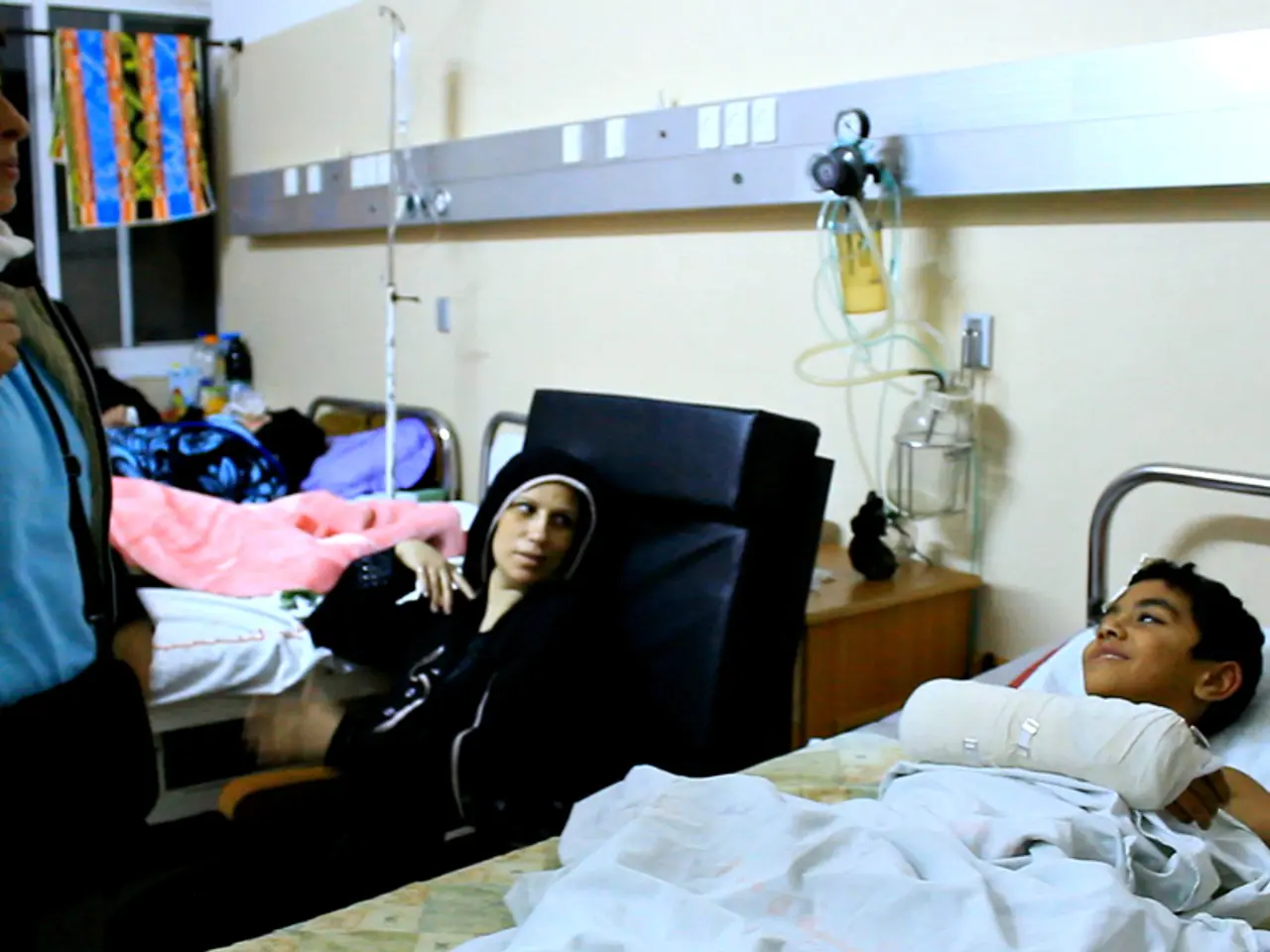Report: Medical schools face struggle to meet the demand for medical professionals due to limited available spots
In the heart of Europe, Germany is facing a challenge in its medical education landscape. The states of Brandenburg and Bremen currently do not have any state-funded medical study programs, leaving a significant number of aspiring doctors to seek education abroad.
According to recent statistics, approximately 9,100 men and women from Germany are studying medicine overseas. The states hope that these graduates will later settle as doctors near their study location, creating a "stickiness effect."
The lack of medical study places is a concern for many, including the Social Association SoVD, which warns that this shortage threatens local healthcare in many regions. The Center for Higher Education Development (CHE) has conducted a study showing significant differences in the number of medical study places offered across federal states in Germany.
Regions with medical faculties tend to have a relatively high doctor density. Saarland and Mecklenburg-Western Pomerania, for instance, had 29 and 26 medical study places per 100,000 inhabitants, respectively, for first-year students, placing them at the top. In contrast, the number of medical study places per capita in North Rhine-Westphalia, Baden-Württemberg, and Thuringia is 13 per 100,000 inhabitants, which is a medium position.
Despite the increase in the number of medical students by 30 percent since 1995, there is still a shortage of doctors. The annual running costs per person in the field of human medicine/health sciences are around 25,000 euros, according to the Federal Statistical Office. However, the number of medical study places has only increased slightly in the past nearly ten years, from around 9,000 to around 10,000.
The popularity of medical studies among German students is undeniable, but a place is particularly difficult to secure. In the winter semester 2024/25, around 10,000 first-year students were able to secure a medical study place at a university, while approximately 20,000 applicants were unsuccessful.
Private institutions offer around 1,500 places for medical students each year, providing an alternative route for those unable to secure a state-funded place. The Medical University of Lausitz, scheduled to start operations in the winter semester 2026/27, aims to address the shortage in Brandenburg.
The gender balance in medical studies is shifting, with around 65 percent of the approximately 113,000 medical students being female. The proportion of women among first-year students is also increasing. Meanwhile, the part-time rate for men in hospitals has risen from 20 to 29 percent in the last ten years, and for women from 33 to 42 percent.
The shortage of doctors is a complex issue, and the German states are grappling with finding the right balance between cost and access to medical education. As the Medical University of Lausitz prepares to open its doors, it remains to be seen how this will impact the medical landscape in Brandenburg and beyond.
Read also:
- Nightly sweat episodes linked to GERD: Crucial insights explained
- Antitussives: List of Examples, Functions, Adverse Reactions, and Additional Details
- Asthma Diagnosis: Exploring FeNO Tests and Related Treatments
- Unfortunate Financial Disarray for a Family from California After an Expensive Emergency Room Visit with Their Burned Infant








